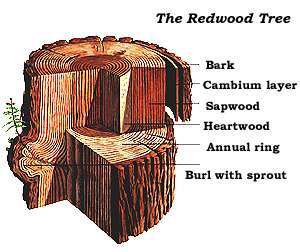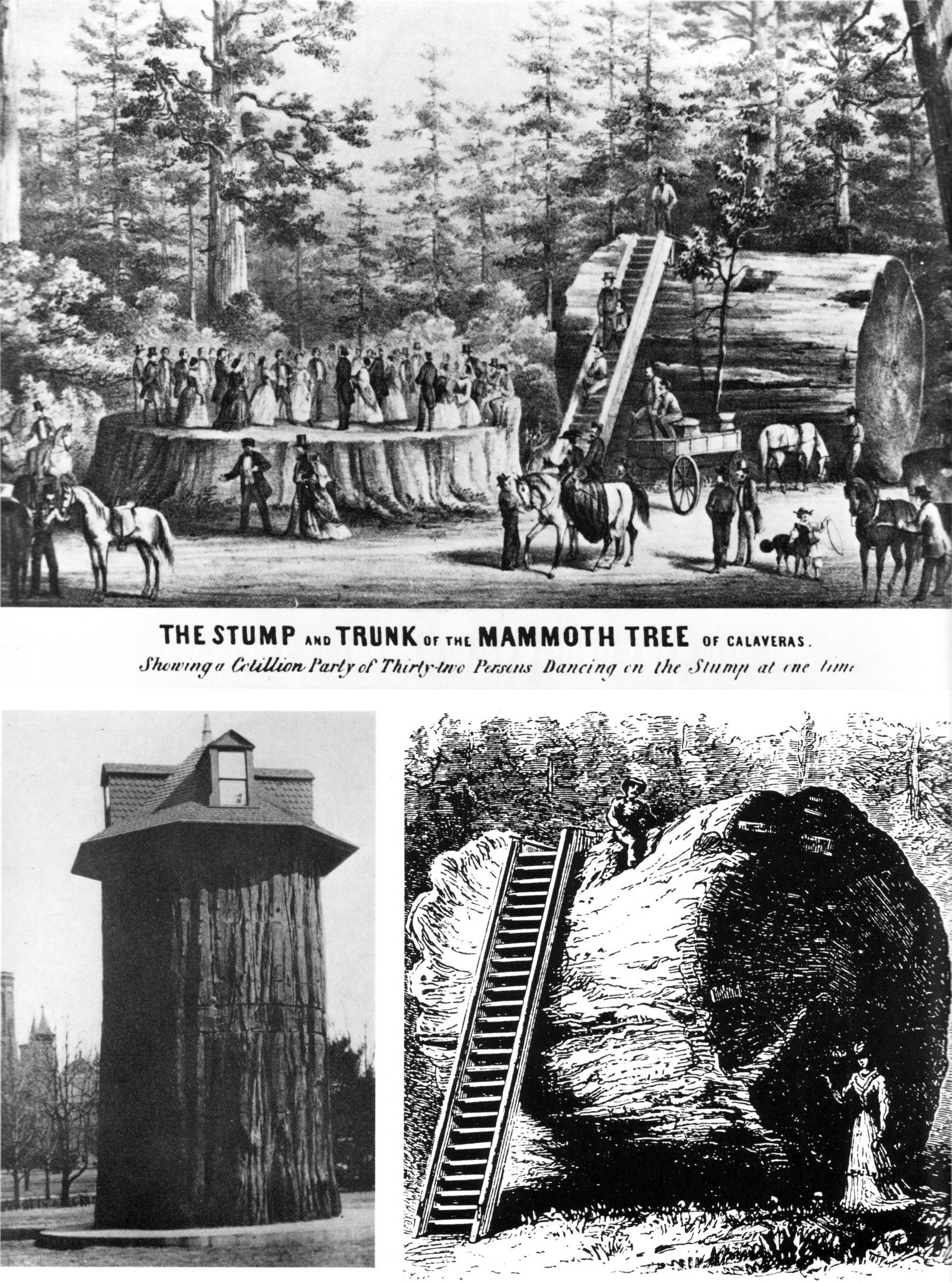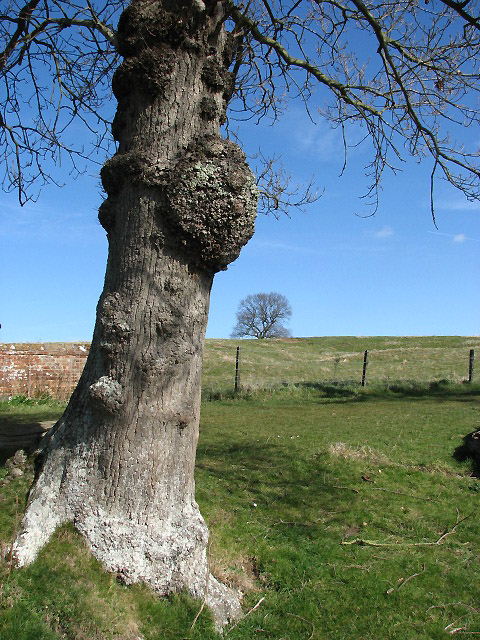|
Redwoods
Sequoioideae, commonly referred to as redwoods, is a subfamily of coniferous trees within the family Cupressaceae, that range in the northern hemisphere. It includes the largest and tallest trees in the world. The trees in the subfamily are amongst the most notable trees in the world and are common ornamental trees. The subfamily reached its peak of diversity during the early Cenozoic. Description The three redwood subfamily genera are '' Sequoia'' from coastal California and Oregon, ''Sequoiadendron'' from California's Sierra Nevada, and '' Metasequoia'' in China. The redwood subfamily contains the largest and tallest trees in the world. These trees can live for thousands of years. Threats include logging, fire suppression, and burl poaching. Only two of the genera, ''Sequoia'' and ''Sequoiadendron'', are known for massive trees. Trees of '' Metasequoia'', from the single living species '' Metasequoia glyptostroboides'', are deciduous, grow much smaller (although are still ... [...More Info...] [...Related Items...] OR: [Wikipedia] [Google] [Baidu] |
Sequoia Sempervirens
''Sequoia sempervirens'' ()''Sunset Western Garden Book,'' 1995: 606–607 is the sole living species of the genus ''Sequoia (genus), Sequoia'' in the cypress family Cupressaceae (formerly treated in Taxodiaceae). Common names include coast redwood, coastal redwood and California redwood. It is an evergreen, long-lived, monoecious tree living 1,200–2,200 years or more. This species includes the List of tallest trees, tallest living trees on Earth, reaching up to in height (without the roots) and up to in diameter at breast height. These trees are also among the List of oldest trees, longest-living trees on Earth. Before commercial logging and clearing began by the 1850s, this massive tree occurred Native species, naturally in an estimated along much of coastal California (excluding southern California where rainfall is not sufficient) and the southwestern corner of coastal Oregon within the United States. Being the tallest tree species, with a small range and an extremely ... [...More Info...] [...Related Items...] OR: [Wikipedia] [Google] [Baidu] |
Metasequoia Glyptostroboides
''Metasequoia glyptostroboides'', the dawn redwood, is a fast-growing, endangered deciduous pinophyta, conifer. It is the sole living species of the genus ''Metasequoia'', one of three genera in the subfamily Sequoioideae of the family (botany), family Cupressaceae. It now survives in the wild only in wet lower slopes and Montane ecosystems, montane river and stream valleys in the border region of Hubei and Hunan provinces and Chongqing municipality in south-central China, notably in Lichuan, Hubei, Lichuan county in Hubei. Although the shortest of the redwoods, it can grow to in height. In 1941, the genus ''Metasequoia'' was reported by paleobotanist as a widely distributed extinct genus based on fossils, before attracting considerable attention a few years later when small populations were found alive in central China. It is a well-known example of a living fossil species. Modern dawn redwood appears identical to its late Cretaceous ancestors. The tree faces considerable risk ... [...More Info...] [...Related Items...] OR: [Wikipedia] [Google] [Baidu] |
Sequoiadendron Giganteum
''Sequoiadendron giganteum'' (also known as the giant sequoia, giant redwood, Sierra redwood or Wellingtonia) is a species of coniferous tree, classified in the family Cupressaceae in the subfamily Sequoioideae. Giant sequoia specimens are the largest trees on Earth. They are native to the groves on the western slopes of the Sierra Nevada (U.S.), Sierra Nevada mountain range of California but have been introduced, planted, and grown around the world. The giant sequoia is listed as an endangered species by the International Union for Conservation of Nature, IUCN with fewer than 80,000 remaining in its native California. The tree was introduced to the U.K. in 1853, and by now might have 500,000 trees growing there where it is more commonly known as Wellingtonia after the Duke of Wellington. The giant sequoia grow to an average height of 50–85 m (164–279 ft) with trunk diameters ranging from 6–8 m (20–26 ft). Record trees have been measured at 94.8 m (311&nbs ... [...More Info...] [...Related Items...] OR: [Wikipedia] [Google] [Baidu] |
Metasequoia
''Metasequoia'', or dawn redwood, is a genus of fast-growing coniferous trees. It contains one extant (living) species, ''Metasequoia glyptostroboides'', which is one of three extant species of conifers known as redwoods in the world. ''Metasequoia glyptostroboides'' is native to Lichuan county in Hubei province, China. Although the shortest of the redwoods, it grows to at least in height. Local villagers refer to the original tree from which most others derive as ''Shuǐshān'' (水杉), or "water fir", which is part of a local shrine. Since its rediscovery in 1944, the dawn redwood has become a popular ornamental, with examples found in various parks in a variety of countries. Together with ''Sequoia sempervirens'' (coast redwood) and ''Sequoiadendron giganteum'' (giant sequoia) of California, ''Metasequoia'' is classified in the Cupressaceae subfamily Sequoioideae. ''M. glyptostroboides'' is the only living species in its genus, but three fossil species are known. Se ... [...More Info...] [...Related Items...] OR: [Wikipedia] [Google] [Baidu] |
Sequoia (genus)
''Sequoia'' is a genus of redwood coniferous trees in the subfamily Sequoioideae of the family Cupressaceae. The only extant species of the genus is '' Sequoia sempervirens'' in the Northern California coastal forests ecoregion of Northern California and Southwestern Oregon in the United States. The two other genera in the subfamily Sequoioideae, '' Sequoiadendron'' and '' Metasequoia'', are closely related to ''Sequoia''. It includes the tallest trees, as well as the heaviest, in the world. Several extinct species have been named from fossil A fossil (from Classical Latin , ) is any preserved remains, impression, or trace of any once-living thing from a past geological age. Examples include bones, shells, exoskeletons, stone imprints of animals or microbes, objects preserve ...s, including ''Sequoia affinis ''(Western North America) and ''Sequoia magnifica'' (petrified wood from the Yellowstone National Park area). Etymology The name ''Sequoia'' was first ... [...More Info...] [...Related Items...] OR: [Wikipedia] [Google] [Baidu] |
List Of Superlative Trees
The world's superlative trees can be ranked by any factor. Records have been kept for trees with superlative height, trunk diameter (girth), canopy coverage, airspace volume, wood volume, estimated mass, and age. Tallest The heights of the tallest trees in the world have been the subject of considerable dispute and much exaggeration. Modern verified measurements with laser rangefinders or with tape drop measurements made by tree climbers (such as those carried out by canopy researchers), have shown that some older tree height measurement methods are often unreliable, sometimes producing exaggerations of 5% to 15% or more above the real height. Historical claims of trees growing to , and even , are now largely disregarded as unreliable, and attributed to human error. The following are the tallest reliably measured specimens from the top 10 species. This table shows only currently standing specimens: Tallest historically Despite the tall heights attained by trees in the p ... [...More Info...] [...Related Items...] OR: [Wikipedia] [Google] [Baidu] |
Burl
A burl (American English) or burr (British English) is a tree growth in which the grain has grown in a deformed manner. It is commonly found in the form of a rounded outgrowth on a tree trunk or branch that is filled with small knots from dormant buds. Burl formation is typically a result of some form of stress such as an injury or a viral or fungal infection. More scientifically, a burl is “the result of hyperplasia, a greatly abnormal proliferation of xylem production by the vascular cambium”. Burls yield a very peculiar and highly figured wood sought after in woodworking, and some items may reach high prices on the wood market. Poaching of burl specimens and damaging the trees in the process poses a problem in some areas. Description A burl results from a tree undergoing some form of stress. It may be caused by a virus, fungus or ''Agrobacterium tumefaciens'' entering the plant through an injury. Most burls grow beneath the ground, attached to the roots as a type ... [...More Info...] [...Related Items...] OR: [Wikipedia] [Google] [Baidu] |
Austrosequoia
''Austrosequoia'' was a genus of redwood that existed from the Cretaceous to Oligocene in what is now Australia and New Zealand. Fossils are known from the Winton Formation, the Little Rapid River in Tasmania and the Tupuangi Formation. While there have been doubts on its identity as a member of Sequoioideae, it does seem likely based on morphological similarity. It is not the only evidence of Sequoioideae members in the Southern Hemisphere, as there is some evidence of a species of Sequoia (''Sequoia chilensis'') that once lived in the Miocene of Chile, though these specimens are questionable. It is not known why ''Austrosequoia'' went extinct with the study that described the last species,''A. tasmanica'', stating that the decline of the conifers in Tasmania was clearly something rather complex which requires extensive study. Regardless, modern attempts in Oceania have managed to grow the extant Coastal Redwood (native to California California () is a U.S. state ... [...More Info...] [...Related Items...] OR: [Wikipedia] [Google] [Baidu] |
Pinophyta
Conifers () are a group of cone-bearing seed plants, a subset of gymnosperms. Scientifically, they make up the division Pinophyta (), also known as Coniferophyta () or Coniferae. The division contains a single extant class, Pinopsida. All extant conifers are perennial woody plants with secondary growth. The majority are trees, though a few are shrubs. Examples include cedars, Douglas-firs, cypresses, firs, junipers, kauri, larches, pines, hemlocks, redwoods, spruces, and yews.Campbell, Reece, "Phylum Coniferophyta". ''Biology''. 7th ed. 2005. Print. p. 595. As of 2002, Pinophyta contained seven families, 60 to 65 genera, and more than 600 living species. Although the total number of species is relatively small, conifers are ecologically important. They are the dominant plants over large areas of land, most notably the taiga of the Northern Hemisphere, but also in similar cool climates in mountains further south. Boreal conifers have many wintertime adapta ... [...More Info...] [...Related Items...] OR: [Wikipedia] [Google] [Baidu] |
Ferns
The ferns (Polypodiopsida or Polypodiophyta) are a group of vascular plants (plants with xylem and phloem) that reproduce via spores and have neither seeds nor flowers. They differ from mosses by being vascular, i.e., having specialized tissues that conduct water and nutrients, and in having life cycles in which the branched sporophyte is the dominant phase. Ferns have complex leaves called megaphylls that are more complex than the microphylls of clubmosses. Most ferns are leptosporangiate ferns. They produce coiled fiddleheads that uncoil and expand into fronds. The group includes about 10,560 known extant species. Ferns are defined here in the broad sense, being all of the Polypodiopsida, comprising both the leptosporangiate ( Polypodiidae) and eusporangiate ferns, the latter group including horsetails, whisk ferns, marattioid ferns, and ophioglossoid ferns. The fern crown group, consisting of the leptosporangiates and eusporangiates, is estimated to have origin ... [...More Info...] [...Related Items...] OR: [Wikipedia] [Google] [Baidu] |
Reticulate Evolution
Reticulate evolution, or network evolution is the origination of a lineage through the partial merging of two ancestor lineages, leading to relationships better described by a phylogenetic network than a bifurcating tree. Reticulate patterns can be found in the phylogenetic reconstructions of biodiversity lineages obtained by comparing the characteristics of organisms. Reticulation processes can potentially be convergent and divergent at the same time. Reticulate evolution indicates the lack of independence between two evolutionary lineages. Reticulation affects survival, fitness and speciation rates of species. Reticulate evolution can happen between lineages separated only for a short time, for example through hybrid speciation in a species complex. Nevertheless, it also takes place over larger evolutionary distances, as exemplified by the presence of symbiogenesis, organelles of bacterial origin in eukaryotic cells. Reticulation occurs at various levels:Perez, Julio ... [...More Info...] [...Related Items...] OR: [Wikipedia] [Google] [Baidu] |
Jurassic
The Jurassic ( ) is a Geological period, geologic period and System (stratigraphy), stratigraphic system that spanned from the end of the Triassic Period million years ago (Mya) to the beginning of the Cretaceous Period, approximately 143.1 Mya. The Jurassic constitutes the second and middle period of the Mesozoic, Mesozoic Era as well as the eighth period of the Phanerozoic, Phanerozoic Eon and is named after the Jura Mountains, where limestone strata from the period were first identified. The start of the Jurassic was marked by the major Triassic–Jurassic extinction event, associated with the eruption of the Central Atlantic magmatic province, Central Atlantic Magmatic Province (CAMP). The beginning of the Toarcian Age started around 183 million years ago and is marked by the Toarcian Oceanic Anoxic Event, a global episode of Anoxic event, oceanic anoxia, ocean acidification, and elevated global temperatures associated with extinctions, likely caused by the eruption of the Kar ... [...More Info...] [...Related Items...] OR: [Wikipedia] [Google] [Baidu] |








